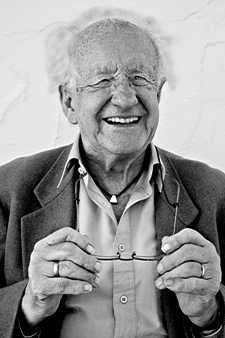Corruption: Theory, Prognosis, Solutions?
By Johan Galtung
Our focus is on transactions: I give something to you, you give something to me. The double flow of which lo social is made.
We then limit the focus to economic transactions, of factors of production–resources, labor, capital, technology, administration–and products–goods, services. The public sector may control the factors; extraction-production-distribution-consumption is done by the public or private (or both) sectors, depending on the type of economy. In modern economies a money flow will be part of economic transactions.
And we generalize (Felipe Briones) to transactions of any kind:
• I pay you for losing the soccer match and I win my bet against odds;
• our state pays you for voting against your bill not to our liking;
• we pay your campaign for public office if you vote in our favor.
In all cases, the power moved from decision-makers to money-holders.
Limited or general, transactions tend to be complex: multiple double flows, triple, quadruple; more or less interconnected, etc.
The definition of corruption rests on a distinction between open and hidden transaction aspects, “above and under the table”, when the hidden is also illegal or at least illegitimate. Much is hidden, and explored by social scientists, e.g., as “latent functions” (R. K. Merton), but not illegal-illegitimate. We may include intent; but it is as difficult to prove as it is easy to hide behind “not intended”.
From this definition follow two ways of fighting corruption:
• make the hidden-opaque transparent-visible: “remove the table”;
• punish corruption as illegal; expose corruption as illegitimate.
The media feed on this, the higher up the corrupt, the better.
Necessary, but insufficient. Transparency exposes what is wrong, but offers no right. Punishment may serve prevention, but outsmarting Rule of Law may also become a national sport, like tax evasion. Moreover, corruption may be seen as legitimate in a culture of corruption.
The Market culture, or Market cult, in extremis, is that culture:
• “corruption” is the grease that makes the economic engine work without energy lost in friction if applied at the correct points;
• for economic-capital growth deblock factors and production and the person taking the risk of deblocking is entitled to compensation;
• a society cannot function unless those who decide are well rewarded for their services, making inequality indispensable;
• those at the bottom have to prove their worth by working their way up unsupported by special grants, subventions, aid;
• in a democracy everybody is his own decision-maker; use that power.
The five justifications of corruption and embezzling funds for the disadvantaged have a right wing color: increasing verticality-inequality by rewarding those already rewarded at the expense of those who are not, and seeing democracy as lawlessness with no strong hand.
Take two famous cases from the two party columns of the Spanish system, so far incapable of handling corruption: Rafael Blasco, a PP politician (Valencia) and Luís Roldán from PSOE with a distinguished career as head of the Navarra province government and as the first civilian to head the Guardia Civil, the state police.
Blasco was recently condemned to six years in prison; Roldán was imprisoned 1995-2005, for ten years. They enriched themselves considerably through corruption as defined above. And they embezzled funds destined for the disadvantaged: Blasco funds for a hospital in Haiti after the 2010 earthquake and other Third World development projects; Roldán funds for the orphans of state police officers. They enriched the rich and impoverished the poor; but more so PP more to the right than PSOE.
Which one is stronger, Rule of Law culture, or Market culture?
Prognosis: corruption will increase as long as the Market culture becomes stronger, probably still for some years. But Market culture “raw capitalism” is today strongly challenged, in two different ways.
First, by other values than economic-capital growth: human growth through human dignity, nature growth through sustainable environment.
Second, by reversing the inequality trend between and within countries, both to decrease the social distance between the top and the bottom and to alleviate the suffering at the bottom. Two tasks.
With these new cultures the corruption culture will decrease.
Spain is high on corruption but also on alternatives. Mondragon in País Vasco is a world center in theory and practice of cooperatives (as opposed to companies); Marinaleda in Sevilla province famous for turning a municipality into a social democratic cooperative.
Alternative structures are also necessary. Fredrik Galtung found the anti-corruption approaches too negative and reminiscent of police inquiries and switched to positive integrity*: doing business legally and legitimately and do so well, even better. Avoiding the forbidden by focusing on the permitted and prescribed (focused less on violence and more on conciling traumas, solving conflicts, and on positive peace between the parties, as his father does).
We should provide corruption cases to illustrate what might have been done, not only what was done.
In addition, perhaps redesigning economic transactions? Maybe more cooperation, less competition? Joining expertise to solve problems of humans and nature, rather than capital, growth? Social responsibility not only singly, but also jointly? Maybe closer relations between producers and consumers, in dialogues about the products? Examples:
Asking people about the computer they want, a frequent answer is, “one that saves automatically; erasing I’ll take care of myself”.
Asking people about the car they want, a frequent answer is, “safe, rounder with a thick rubber belt, upholstered, maximum speed = maximum permitted speed.” Like Tivoli cars. Who dares produce them?
Conclusion: add to transparency and punishment the positive ways to integrity, making large-scale corruption a sad, but a short episode.
